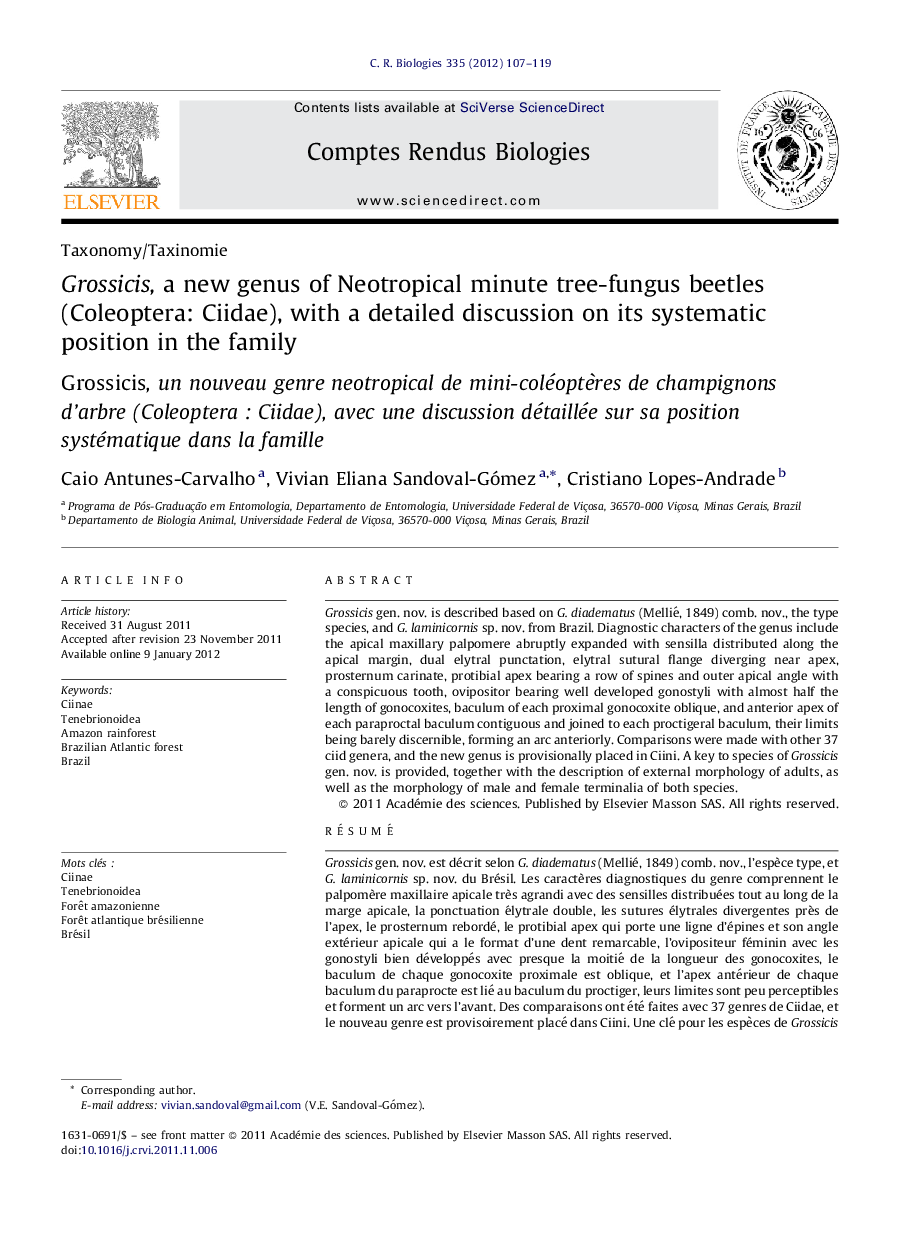| Article ID | Journal | Published Year | Pages | File Type |
|---|---|---|---|---|
| 2783695 | Comptes Rendus Biologies | 2012 | 13 Pages |
Grossicis gen. nov. is described based on G. diadematus (Mellié, 1849) comb. nov., the type species, and G. laminicornis sp. nov. from Brazil. Diagnostic characters of the genus include the apical maxillary palpomere abruptly expanded with sensilla distributed along the apical margin, dual elytral punctation, elytral sutural flange diverging near apex, prosternum carinate, protibial apex bearing a row of spines and outer apical angle with a conspicuous tooth, ovipositor bearing well developed gonostyli with almost half the length of gonocoxites, baculum of each proximal gonocoxite oblique, and anterior apex of each paraproctal baculum contiguous and joined to each proctigeral baculum, their limits being barely discernible, forming an arc anteriorly. Comparisons were made with other 37 ciid genera, and the new genus is provisionally placed in Ciini. A key to species of Grossicis gen. nov. is provided, together with the description of external morphology of adults, as well as the morphology of male and female terminalia of both species.
RésuméGrossicis gen. nov. est décrit selon G. diadematus (Mellié, 1849) comb. nov., l’espèce type, et G. laminicornis sp. nov. du Brésil. Les caractères diagnostiques du genre comprennent le palpomère maxillaire apicale très agrandi avec des sensilles distribuées tout au long de la marge apicale, la ponctuation élytrale double, les sutures élytrales divergentes près de l’apex, le prosternum rebordé, le protibial apex qui porte une ligne d’épines et son angle extérieur apicale qui a le format d’une dent remarcable, l’ovipositeur féminin avec les gonostyli bien développés avec presque la moitié de la longueur des gonocoxites, le baculum de chaque gonocoxite proximale est oblique, et l’apex antérieur de chaque baculum du paraprocte est lié au baculum du proctiger, leurs limites sont peu perceptibles et forment un arc vers l’avant. Des comparaisons ont été faites avec 37 genres de Ciidae, et le nouveau genre est provisoirement placé dans Ciini. Une clé pour les espèces de Grossicis gen. nov. a été fournie avec la description de la morphologie externe des adultes et la morphologie de la terminalia des mâles et des femmes des deux espèces.
